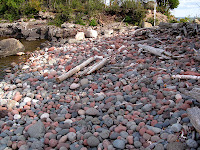Football season is well on its way, the weather is getting cooler, and the leaves are beginning to change. This means two things…the November 1st early action deadline is right around the corner, and there is still tons of time to visit college campuses! Unless you are accepted into an early decision plan for your college, you most likely will have 7 months to decide where you want to go to school. You should be visiting colleges now and once you receive your acceptance letters, if you still haven’t decided, make sure you get back to the campuses and do your due diligence in deciding which environment is the best for you. Remember you will be living at your college for at least 4 years, so you want to make sure it is the best all-around fit for you!
Visiting colleges and universities is one of the most important parts of the college search process. Obviously academics, majors selection, internship opportunities, and reputation are important factors to selecting the right school, but the overall “feel” one gets at a college should be near the top of the list of deciding factors. With advances in technology, most colleges have elaborate websites where there are hundreds of pictures of the school and even virtual tours one can take. Although this is better than nothing, it does not have the same effect as actually walking the campus, watching students interact, sitting in on a class, talking with school faculty, and just listening to your gut reaction to the overall collegiate environment. Every school will be a little different, and the absolute best way to truly know if you will be happy at a certain college is by physically being there and soaking everything in. Also, although it is not always possible, try and visit the school while the college is in session full-time. For most colleges this will be from late August to early May. While visiting a college, you can only gain a true gut feeling and perspective of the school life when students are there and the campus is vibrant with the personality of its students.
The following list contains a few helpful hints and strategies when planning on visiting different colleges on your list:
--As mentioned earlier, try to visit college when school is in session, as that is when you will get the true feeling of the environment.
--Call the undergraduate admissions office at the college you will be visiting to set up a guided tour. This way you will have someone with extended knowledge of the college explain the school’s layout and will be able to answer any questions you may have about the school.
--Think of questions to ask while visiting the college! You will most likely be living at the college you choose for 4-5 years, so it makes sense to do your research on everything about the school and its surroundings. Questions ranging from activities available for students, housing availability, food services, the amount of students that stick around on the weekend, internship opportunities, service opportunities, intramurals, community surroundings, and much more should all be on your list to ask admission representatives at each school.
--If you are traveling far to visit a college, plan ahead and see if there are any other schools that you may be interested in and can stop at on the way. You won’t have that many opportunities to visit colleges, so make the most out of each trip!
--Try to schedule a time to sit in on a college class, and if you know what you want to major in, try to sit in on a class in that field.
--Again, if you know your major, try to schedule a meeting with a professor in that field. This will give you a better idea of what to expect in that major and overall field.
--Take pictures and notes! Hopefully, you will be visiting multiple college campuses. In order to avoid getting schools mixed up, snap some photos and jot down a few notes to keep everything fresh in your mind!
--Soak it all in and have fun! There is no getting around the fact that the college search process in an important part of your life, but most of you will only be doing this once in your life (unless you go to graduate school), so try to live in the moment and enjoy visiting some very beautiful and exciting college campuses, which very well could be your next home!
-Joseph D. Korfmacher, MASC
 Along the southeast side of the lake, however, small beaches occur in association with minor bumps on the shoreline. Some may correspond to small stream deltas, but not all do. This is based on very limited observations, but the shoreline between these points appears to be sediment poor. These photos are from one of these small points, where the beach has formed a small cusp at one of these subtle promontories.
Along the southeast side of the lake, however, small beaches occur in association with minor bumps on the shoreline. Some may correspond to small stream deltas, but not all do. This is based on very limited observations, but the shoreline between these points appears to be sediment poor. These photos are from one of these small points, where the beach has formed a small cusp at one of these subtle promontories.


















































